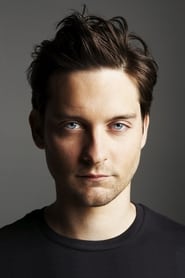Cast
View AllTobey Maguire
as Homer Wells
Charlize Theron
as Candy Kendall
Delroy Lindo
as Arthur Rose
Paul Rudd
as Lt. Wally Worthington
Michael Caine
as Dr. Wilbur Larch
Jane Alexander
as Nurse Edna
Kathy Baker
as Nurse Angela
Erykah Badu
as Rose Rose
Kieran Culkin
as Buster
Kate Nelligan
as Olive Worthington
Heavy D
as Peaches
J.K. Simmons
as Ray Kendall
Erik Per Sullivan
as Fuzzy
Paz de la Huerta
as Mary Agnes
K. Todd Freeman
as Muddy
Crew
Director
- Lasse Hallström
Producer
- Richard N. Gladstein
- Lila Yacoub
- Alan C. Blomquist
- Leslie Holleran
Reviews
Wuchak
Beauty and the beast in Maine during WWII
On the surface “The Cider House Rules” (1999) is a quality period piece about life at an apple orchard and orphanage in Maine during WWII. Tobey Maguire stars as Homer Wells, who was raised at a remote orphanage and favored by caretaker Dr. Larch (Michael Caine), who imparts his vast medical knowledge & skills to the young man. At the age of 21 Homer decides to leave the orphanage with a couple that stopped by for an illegal abortion and ends up working at an apple orchard. Will he ever return?
It's the subtext where the film soars for those interested in ruminations on the complexities of morality and the place that outward or inward rules play.
Here's a taste: The movie contrasts outer rules with innate moral rules. The former can be broken as it suits the individual without any ill-effects, like the cider house rules in the film or stepping over the wall at Niagara Falls to get a better picture; innate moral rules, however, cannot be broken without severe consequences. To illustrate, the apple workers rightly mock the cider house rules made by people who don't know what it's like to live & work there, but one laborer breaks a universal spiritual law and so loses a close relationship and something worse, which conveys the idea that "the wages of sin is death."
Another example involves the rules of society demanding that a person have proper credentials in order to do the work Dr. Larch performs, and understandably so, but official credentials on a wall are irrelevant in regards to some people, like Homer, who's thoroughly expert at his craft, credentials or no credentials. And so Larch creates fake "proper" credentials to appease officials and patients.
Also, Wally & Candy (Paul Rudd & Charlize Theron) impulsively have an illegal abortion at the beginning of the movie but, by the end, it doesn't look like they're going to have very wild sex anymore (which is different than saying they won't have any sexual relations). They no doubt strongly regret deciding to break the rules and have an abortion, which was illegal at the time.
Obviously the movie's not far Left or far Right; it's somewhere in the middle in its realistic reflections on moral complexities and ambiguities. Both sides of the abortion debate, for instance, are presented. And, while it could be argued that the movie somewhat supports the pro-choice position, it doesn’t neglect to convey the conservative view and effectively shows how the debate is more complex than black or white. For example, if a man forces his self on a woman and she gets pregnant, the life within her is not there by her choice and therefore she arguably has the right to abort that life with the blood of the child being on the head of the impregnating male.
Elsewhere, Homer argues the conservative position, suggesting that people should be responsible enough to control themselves BEFORE a woman is impregnated and the ugly issue of abortion rears its head. Dr. Larch later remarks that he wishes the world were as idealistic as Homer sees it, but instead we’re stuck with an intricately phukked up planet where people make wrong choices all the time, which have a negative domino effect.
The film runs 2 hours, 6 minutes and was shot in Northampton, Massachusetts (orphanage); Dummerston, Vermont (orchard); Bernard, Corea and Sand Beach, Maine; as well as surrounding New England locations.
GRADE: B+
Sep 22, 2018
Thematic Analysis
As a dramatic work, The Cider House Rules examines complex human relationships and emotional struggles against the backdrop of a period setting that reflects societal issues of its time. The character development particularly stands out, offering viewers a chance to reflect on their own life journeys.
Director Lasse Hallström brings their distinctive visual style to this film, continuing their exploration of themes seen in their previous works while adding new elements. Their approach to character development and emotional depth creates a viewing experience that rewards close attention.
Released in 1999, the film exists within a cultural context that now offers viewers historical perspective on the social issues of that era. Its critical acclaim reflects its artistic achievements and its place in cinema history.
Did You Know?
- The production of The Cider House Rules took approximately 17 months from pre-production to final cut.
- With a budget of $24.0 million, the film proved to be a financial success, earning back its investment and more.
- The final cut of the film runs for 126 minutes, though the director's initial assembly was reportedly 176 minutes long.
- The director insisted on using practical effects whenever possible, reserving CGI for only the most necessary scenes.
- The cast underwent specialized training for 3 weeks before filming began.
- The film contains approximately 2160 individual shots.
Historical Context
- In 1999, when this film was released:
- Globalization was accelerating economic and cultural exchange.
- Digital technology was transforming the entertainment industry.
- Independent cinema was growing in influence, challenging the dominance of major studios.
How This Film Stands Out
While The Cider House Rules shares thematic elements with other films in its genre, it distinguishes itself through its unique approach to storytelling, visual style, and character development.
Unlike Ero in guerra ma non lo sapevo, which focuses more on action than character development, The Cider House Rules subverts genre expectations by exploring its themes with greater nuance.
While films like Loving Pablo and Landscape with Invisible Hand explore similar territory, The Cider House Rules stands apart through its distinctive directorial vision and pacing.
This film's unique contribution to cinema lies in its thoughtful balance of entertainment value and thematic depth, making it a valuable addition to its genre.
Details
- Release Date: December 17, 1999
- Runtime: 2h 6m
- Budget: $24,000,000
- Revenue: $88,500,000





















